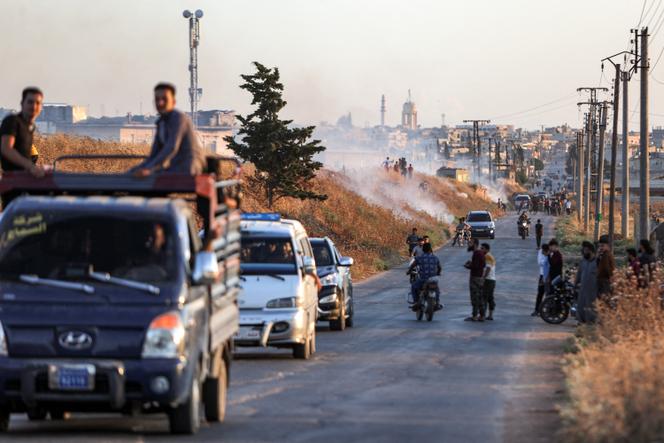


Ankara has every reason to be pleased. Without having deployed a single additional soldier to northern Syria, the Turkish government is on the verge of seeing two of its longest-held wishes come true: an expansion of its reach beyond the zones controlled by its army, mainly near the border, and a retreat by the Syrian Kurdish forces, which are linked to Turkey's Kurdistan Workers' Party (PKK).
In less than a week, the stunning offensive launched on November 27 by the radical Islamist group Hayat Tahrir al-Sham (HTS), in coordination with its Turkish-backed allies, has enabled Syrian rebels to nearly double their territory by seizing Aleppo, the country's second-largest city, pushing their offensive southwards to the outskirts of Hama and retaking the strategic Kurdish-controlled enclave of Tel Rifaat to the north. The latter, which was achieved on Sunday by the Syrian National Army (SNA), a coalition of pro-Turkish militias, highlights Ankara’s close ties to the SNA, a longtime rival of HTS. It also reveals how effectively Turkey has navigated the region's complexities.
For years, Turkey has been the main backer of the insurgent groups that rose up against President Bashar al-Assad in 2011. This interventionist policy by Turkey's President Recep Tayyip Erdoğan was driven by a desire to prevent Kurdish militants from massing along the Turkish border and to stabilize northern Syria so that Syrian refugees living in Turkey could be returned there. The policy culminated in the ongoing occupation of northern Syrian regions by Turkish armed forces and their SNA auxiliaries, beginning in August 2016.
Understanding the nature, organization and shifting alliances of the SNA, which is armed, trained and funded by Ankara, is "a real challenge," according to Orwa Ajjoub, a Syrian expert now based in Sweden, where he is a doctoral student at Malmö University. The SNA includes both local groups and units from the governorates of Damascus, Homs and Deraa. Some of these factions, according to Ajjoub, are fully allied with Turkey, such as the Sultan Suleiman Shah Brigade (SSSB), the al-Hamza Division (HD) and the Sultan Murad Brigade, while others, such as the Levant Front (FL), Jaysh al-Islam and Ahrar al-Sham, have sought to balance their interests with Ankara’s.
Turkey has long struggled behind the scenes to unite these various groups, whose combined strength numbers between 30,000 and 70,000 fighters, depending on the moment in time and the source. The factions, which are mostly comprised of Arabs and Turkmen, have no real ideological unity, other than being very anti-Kurdish, and are burdened with a reputation as mercenaries, but they have all been part of Turkey's war against the Syrian Democratic Forces (SDF), of which the People's Protection Units (YPG), allied to the PKK, are a major component.
You have 48.35% of this article left to read. The rest is for subscribers only.
